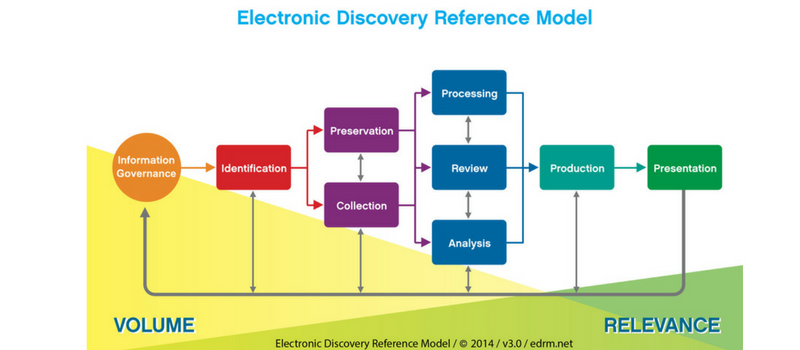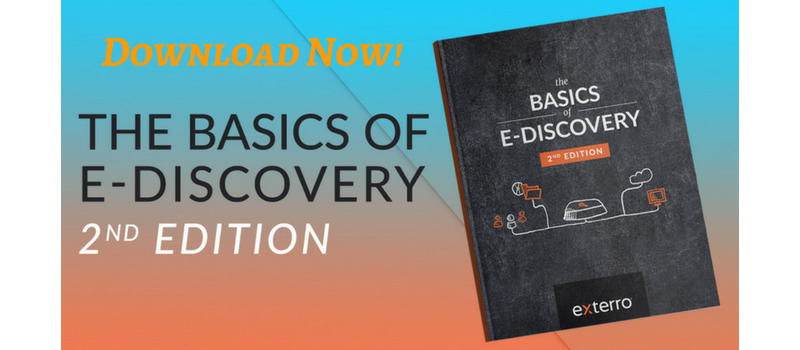E-Discovery
The Basics of E-Discovery Processes
March 11, 2021
What is the EDRM? (Electronic Discovery Reference Model)
Whether you’re just starting to learn about e-discovery or you’re an experienced professional reviewing the fundamentals, the Electronic Discovery Reference Model (EDRM) is a great place to start. Created in 2005 by attorney George Socha and technologist Tom Gelbmann, the EDRM is a framework that describes a process that most organizations go through around e-discovery. It explains what the steps are and how typical organizations go through those steps to fulfill their e-discovery obligations.
Rather than a process itself, the EDRM describes a typical process. So it tends to start at one end and move from information governance, which asks fundamental questions about where and how organization store their data, through to preservation, collection, processing, review, and ultimately production.

What are the phases of the EDRM?
The phases or elements of the EDRM are as follows:
- Information Governance: Polices and procedures regulating the creation, storage, and deletion of organizational data
- Identification: Determining which documents may be relevant to a matter (and therefore subject to further analysis)
- Preservation: Potentially relevant data is preserved in its original state for review by counsel
- Collection: Gathering relevant data for transfer to an organization’s counsel
- Processing: Collected documents are prepared for review in appropriate e-discovery technology
- Review: Legal teams review collected documents to determine if they are responsive to the matter or subject to privilege (and thus not required to be produced to opposing counsel)
- Analysis: Legal teams determine how responsive data can be constructed into the legal argument being made during litigation
- Production: All responsive, non-privileged documents are delivered in usable file formats to opposing counsel before litigation
- Presentation: The deployment of selected responsive data during litigation to assert or defend against the claims of the case
Does e-discovery have to be complex?
E-discovery can sound very complex, but in the end, it's fairly simple, especially if you have the right technology. It's a method to find the data that's relevant to a particular case or project, and deal with it appropriately for that particular case. So in some instances, it can be very detailed. In other instances, it's pretty simple to perform. While it's not that complex, it often seems that way at the outset.
Technology can help in the e-discovery process by streamlining and making the process more efficient. So for example, if you're doing a review, technology can keep track of all of your documents and allow you to code them all in one system, instead of relying on paper documents. So it just makes the whole system run a little bit more smoothly.
If you want to learn more, download the PDF of Exterro’s Basics of E-Discovery today!
